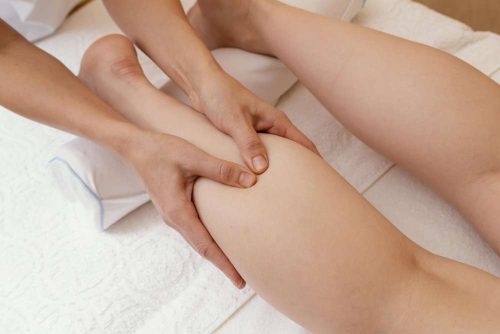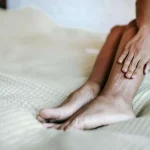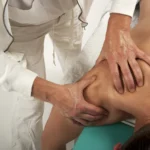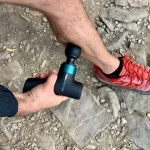Do you experience discomfort or pain when you massage your calves? You’re not alone. Many people experience pain when they massage their calves, often wondering why. In this article, we’ll explore the potential causes of pain when massaging your calves and what you can do about it. We’ll also discuss why it’s important to understand the underlying reasons for calf pain so that you can manage it properly. So, if you’re asking yourself “Why does it hurt when I massage my calves?”, keep reading to learn more.
Anatomy of the Calf
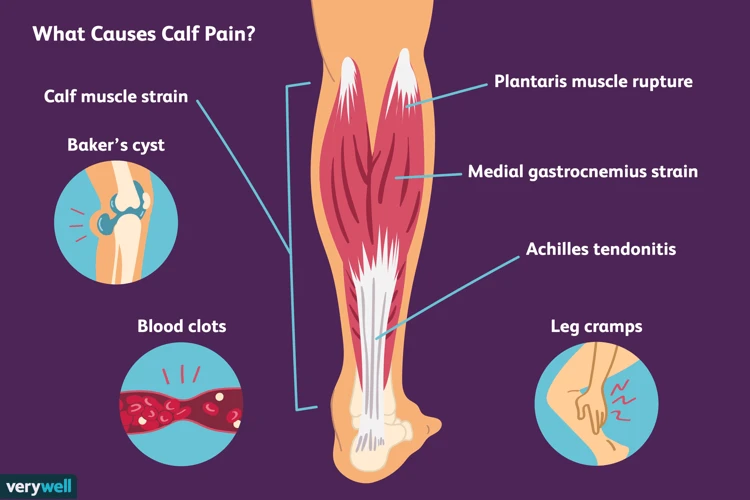
The calf is made up of two muscles: the gastrocnemius and the soleus. Together, these muscles are responsible for plantar flexion of the ankle. The calf is covered in a layer of fascia, a type of connective tissue that helps to give the calf its shape and stability.
Muscles of the Calf
The gastrocnemius is the larger of the two calf muscles, and is the most visible. It originates at the back of the knee and inserts at the Achilles tendon at the back of the ankle. The soleus is a much smaller muscle located beneath the gastrocnemius and is responsible for providing additional support to the ankle.
Fascia of the Calf
The fascia of the calf is a thin, web-like layer of connective tissue that covers the muscles of the calf and provides stability. The fascia also helps to protect the muscles from injury and can become tight due to overuse or inactivity. This tightness can lead to pain and discomfort when massaging the calf muscles, as the fascia can become inflamed and sensitive to touch.
It is not uncommon for the calves to feel tender and sore when massaging them, as the fascia can be quite sensitive and cause pain or discomfort. This can be especially true for those who have been inactive for a long period of time or for those who have recently suffered an injury to the calf muscles. If you are experiencing pain or discomfort after massaging your calves, it is important to speak to your doctor to determine the cause and get the appropriate treatment.
Why Does Massaging Your Calves Hurt?
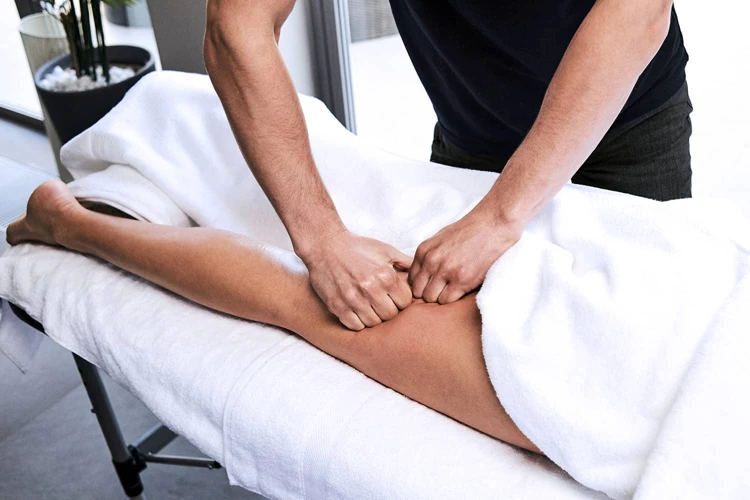
Muscle Strains
It is possible that your calves are sore due to a muscle strain. A muscle strain is an injury to your muscles caused by overstretching or tearing of the muscle fibers. If your calf muscles are strained, massage could cause pain and discomfort due to the pressure applied to the area. Additionally, it could cause further damage to the muscle fibers if the massage is too intense.
Muscle Spasms
Pain from massaging your calves may be caused by muscle spasms. A muscle spasm is an involuntary contraction of the muscle, which can cause intense pain and discomfort. The massage could trigger the muscle spasm and cause it to worsen, resulting in further pain and soreness in the area.
Trigger Points
The pain and discomfort you experience when massaging your calves could be due to trigger points. Trigger points are areas of tightness and tension in the muscles that can cause referred pain and discomfort in other areas of the body. Massage can help to release the tension in the muscle, but it can also cause pain when the pressure is applied to the trigger point.
It is important to be aware of why it hurts to have your calves massaged so that you can make an informed decision about whether or not the massage is beneficial for you. If your pain is severe or persistent, it is best to consult a medical professional for advice.
Benefits of Massaging Your Calves
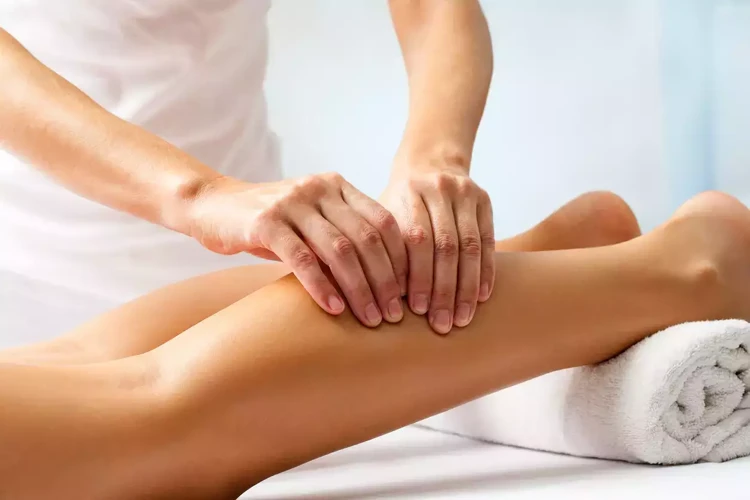
Improved Circulation
Massaging your calves can help improve blood circulation to the area. When the muscles are massaged, it encourages the blood and oxygen to flow freely. This helps the muscles to relax and can reduce pain in the area. Regular massaging of the calves can also help keep muscles strong and flexible.
Reduced Risk of Injury
Massaging your calves can also help reduce the risk of injury as it helps to loosen and warm up the muscles. By regularly massaging your calves, you can help to prevent muscle imbalances that can lead to injury.
Increased Flexibility
Massaging the calves can help to increase flexibility in the muscles and tendons. This is because the massage helps to loosen the muscles and tendons, which can improve overall range of motion. Regular massage can also help to reduce any tightness or stiffness in the muscles.
Tips for Massaging Your Calves
Start Slowly
When massaging your calves, start slowly and avoid sudden movements. Begin by light brushing strokes and gradually apply more pressure as you go. This will help your body adjust to the massage and reduce the risk of soreness.
Use Gentle Pressure
When massaging your calves, use gentle pressure. Massaging with too much pressure can cause discomfort or even pain. Begin with light pressure and increase the pressure gradually as you massage.
Avoid Kneading
Avoid kneading or deep tissue massage of your calves. Kneading can be too intense and can cause pain and discomfort. Stick with light massage techniques such as rubbing and brushing.
Frequently Asked Questions
Are there any other areas of the body that can be uncomfortable when massaging?
- Neck and Shoulders: The neck and shoulder area can be very sensitive to pressure, so it’s important to be gentle when massaging these areas.
- Hips: The hip area is often quite tight and can be painful when massaged. Applying pressure to the hip area may cause discomfort.
- Abdomen: Massaging the abdomen can be uncomfortable due to the presence of organs and sensitive nerve endings. It’s important to be gentle when massaging this area.
- Feet: The feet can be very sensitive to pressure, so it’s important to be gentle when massaging the feet. Applying too much pressure can cause pain and discomfort.
Is there a specific type of massage that is recommended for calf pain?
Yes. Depending on the cause of the calf pain, there are several types of massage techniques that can be used to alleviate discomfort. Here are some of the most commonly used massage techniques for calf pain:
- Swedish Massage: This type of massage is best for relaxation and stress relief. It uses long, circular strokes and light pressure to release tension and increase circulation.
- Sports Massage: This type of massage is specifically designed to prepare athletes for competition or improve performance during intense physical activity. It uses deep kneading and stretching techniques to allow for greater range of motion and flexibility.
- Trigger Point Massage: This type of massage is used to target specific areas of the body that are causing pain. It uses deep pressure to release muscle knots and tension.
- Myofascial Release: This type of massage is used to release tightness in the fascia, which is the connective tissue that surrounds the muscles. It uses slow strokes and sustained pressure to release tension and increase circulation.
In addition to massage therapy, it is also important to stretch the calf muscles regularly to help reduce pain and improve flexibility.
Are There Any Risks Associated with Massaging the Calves?
Massaging the calves can lead to bruising, soreness, and aching. If too much pressure is applied, the massage can cause damage to the muscle fibers. Additionally, calf massages may aggravate certain medical conditions, such as varicose veins and thrombophlebitis, so individuals with these conditions should exercise caution when considering calf massages.
Are there any ways to reduce the discomfort when massaging the calves?
To reduce discomfort when massaging the calves, start with gentle strokes, using a light to moderate pressure. Move your hands in a circular motion around the calf muscle, gradually increasing the pressure. Increase the pressure only to the point of discomfort and then back off. Also, use a good quality massage lotion or oil to reduce friction and provide added lubrication. Finally, avoid massaging over bony areas, as this can cause pain.
How often should someone massage their calves to help reduce pain?
Massaging the calves every day or every other day can help reduce pain and tension. To achieve the best results, one should massage the calves for 5 to 10 minutes each session. Additionally, a person can apply gentle pressure to areas of tightness and hold for 30 seconds. This can help to stretch and relax the muscles. If the pressure is too strong, it can further aggravate the muscles and increase pain.
Conclusion
Regularly massaging your calves can help reduce the pain, increase circulation, and improve mobility and flexibility. It’s important to remember not to massage too deeply or too often, as this may cause further irritation and discomfort. Additionally, if you experience any pain during a massage, it’s always best to consult a healthcare professional for advice.
📚References
- Why Does It Hurt When You Massage Your Calves? – Livestrong.com

